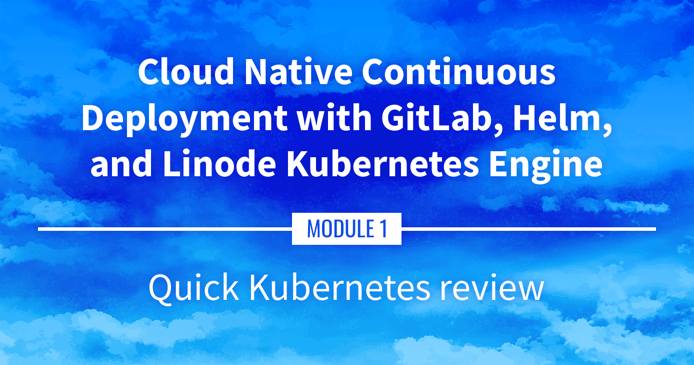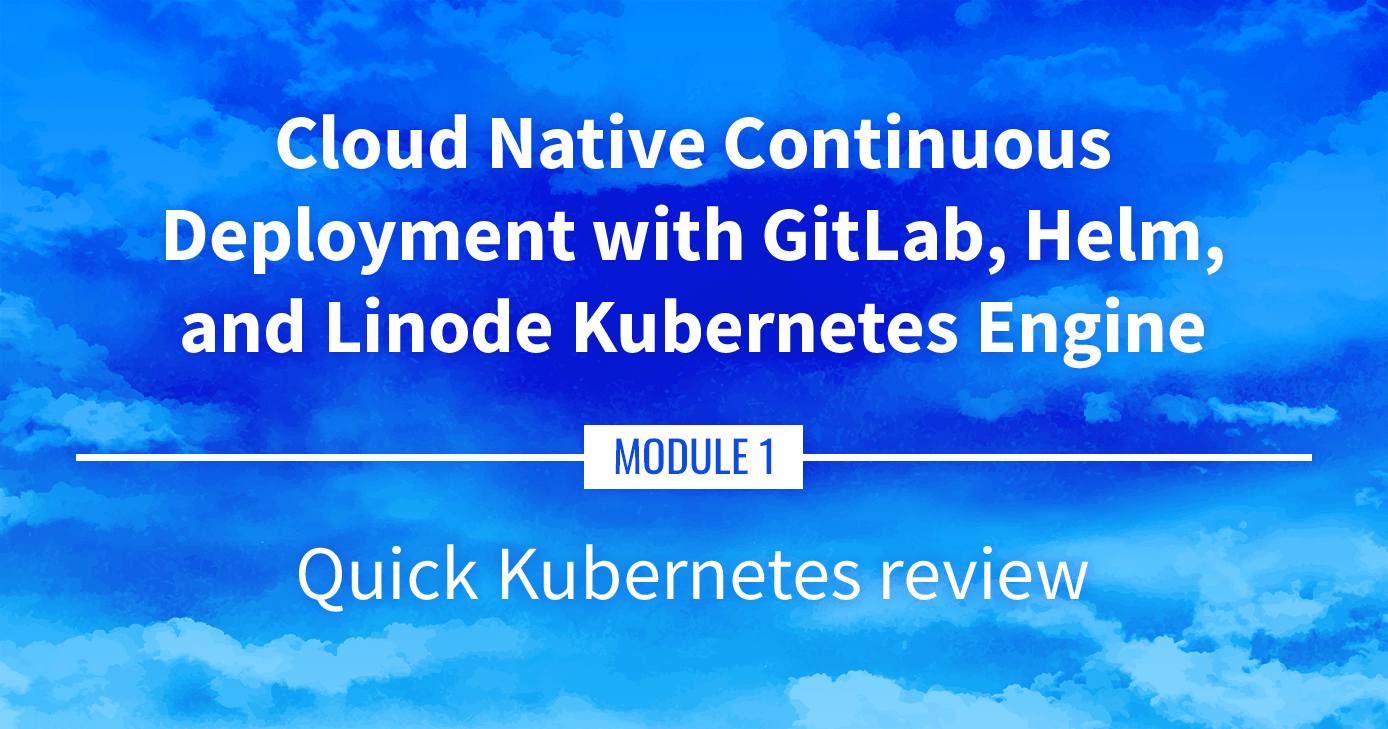Building a Continuous Deployment Pipeline Using LKE (Part 4): Kubernetes Review
Updated
, by Linode
Traducciones al EspañolEstamos traduciendo nuestros guías y tutoriales al Español. Es posible que usted esté viendo una traducción generada automáticamente. Estamos trabajando con traductores profesionales para verificar las traducciones de nuestro sitio web. Este proyecto es un trabajo en curso.
Create a Linode account
to try this guide with a $ credit.
This credit will be applied to any valid services used during your first
days.


Kubernetes Review
This is an optional part of the series that provides an introduction to Kubernetes. It covers deploying a simple application on Kubernetes and each of the components that are involved (such as pods, controllers, and services).
Navigate the Series
- Main guide: Building a Continuous Deployment Pipeline Using LKE
- Previous section: Part 3: Deploying the LKE Cluster
- Next section: Part 5: Accessing Internal Services
Presentation Text
Here’s a copy of the text contained within this section of the presentation. A link to the source file can be found within each slide of the presentation. Some formatting may have been changed.
Quick Kubernetes review
- Let’s deploy a simple HTTP server
- And expose it to the outside world!
- Feel free to skip this section if you’re familiar with Kubernetes
Creating a container
- On Kubernetes, one doesn’t simply run a container
- We need to create a “Pod”
- A Pod will be a group of containers running together (often, it will be a group of one container)
- We can create a standalone Pod, but generally, we’ll use a controller (for instance: Deployment, Replica Set, Daemon Set, Job, Stateful Set…)
- The controller will take care of scaling and recreating the Pod if needed (note that within a Pod, containers can also be restarted automatically if needed)
A controller, you said?
- We’re going to use one of the most common controllers: a Deployment
- Deployments…
- can be scaled (will create the requested number of Pods)
- will recreate Pods if e.g. they get evicted or their Node is down
- handle rolling updates
- Deployments actually delegate a lot of these tasks to Replica Sets
- We will generally have the following hierarchy: Deployment → Replica Set → Pod
Creating a Deployment
- Without further ado:
kubectl create deployment web --image=nginx - Check what happened:
kubectl get all - Wait until the NGINX Pod is “Running”!
- Note:
kubectl create deploymentis great when getting started… - … But later, we will probably write YAML instead!
Exposing the Deployment
We need to create a Service
We can use
kubectl exposefor that (but, again, we will probably use YAML later!)For internal use, we can use the default Service type, ClusterIP:
kubectl expose deployment web --port=80For external use, we can use a Service of type LoadBalancer:
kubectl expose deployment web --port=80 --type=LoadBalancer
Changing the Service type
- We can
kubectl delete service weband recreate it - Or,
kubectl edit service weband dive into the YAML - Or,
kubectl patch service web --patch '{"spec": {"type": "LoadBalancer"}}' - … These are just a few “classic” methods; there are many ways to do this!
Deployment → Pod
- Can we check exactly what’s going on when the Pod is created?
- Option 1:
watch kubectl get all- displays all object types
- refreshes every 2 seconds
- puts a high load on the API server when there are many objects
- Option 2:
kubectl get pods --watch --output-watch-events- can only display one type of object
- will show all modifications happening (à la
tail -f) - doesn’t put a high load on the API server (except for initial display)
Recreating the Deployment
- Let’s delete our Deployment:
kubectl delete deployment web - Watch Pod updates:
kubectl get pods --watch --output-watch-events - Recreate the Deployment and see what Pods do:
kubectl create deployment web --image=nginx
Service stability
- Our Service still works even though we deleted and re-created the Deployment
- It wouldn’t have worked while the Deployment was deleted, though
- A Service is a stable endpoint
This page was originally published on
